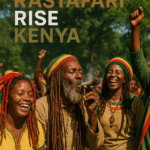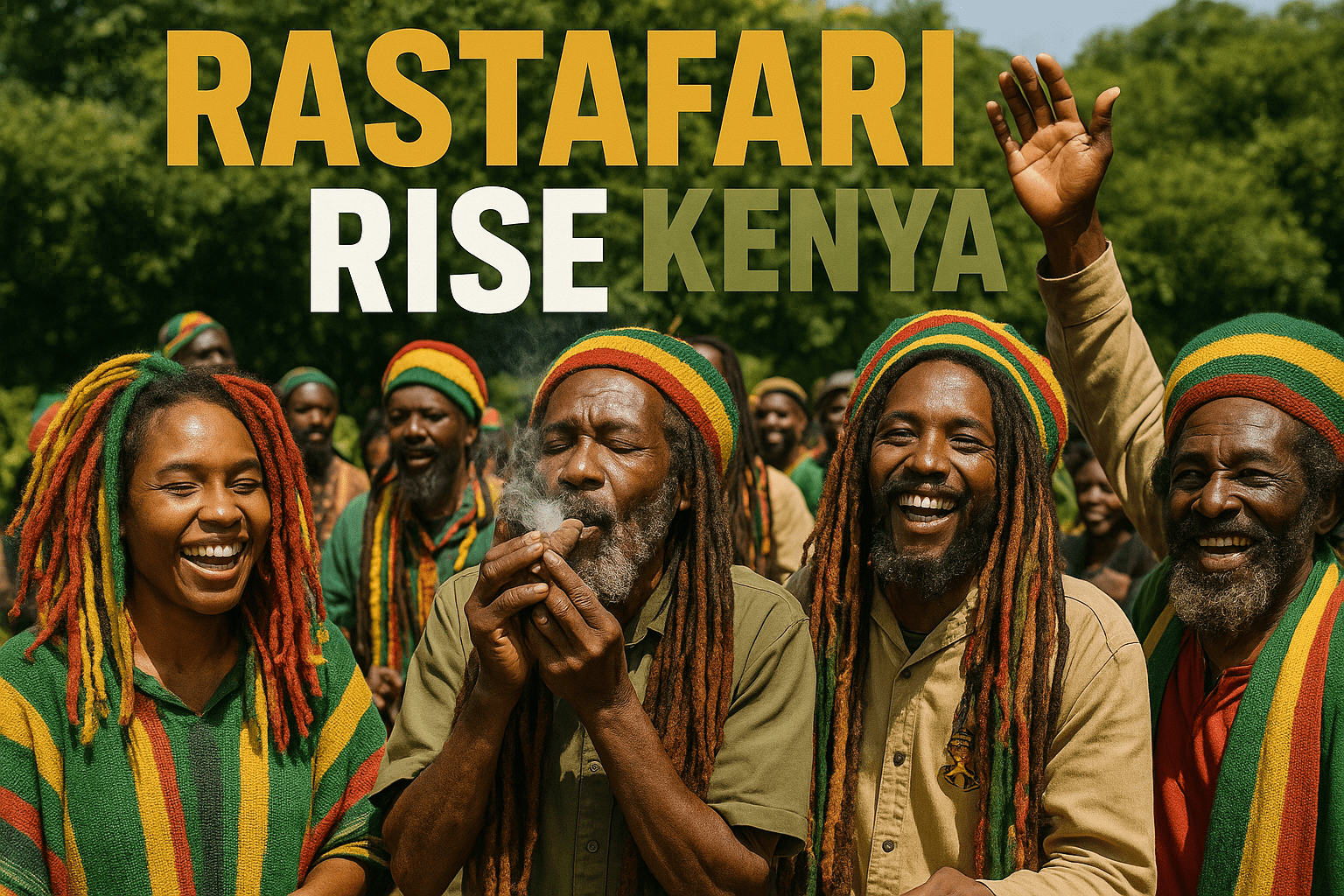

Rastafari’s Rise in Kenya
By Darius Spearman (africanelements)
Support African Elements at patreon.com/africanelements and hear recent news in a single playlist. Additionally, you can gain early access to ad-free video content.
Rastafari Recognition in Kenya
The Rastafari movement in Kenya has recently achieved a significant milestone: official recognition as a legitimate religion. A landmark 2019 court ruling heavily influenced this pivotal moment (africanews.com). The case involved a schoolgirl who faced expulsion for refusing to cut her dreadlocks, which she considered a sacred symbol of her faith (africanews.com). The High Court, and subsequently the Supreme Court, ruled that Rastafari was indeed a legitimate religion deserving of protection (africanews.com).
This judicial decision was not merely about a hairstyle; it was a profound affirmation of religious freedom. The High Court of Kenya, in the case of JWM (alias P) v Board of Management O High School, concluded that denying a Rastafarian student the right to education due to her dreadlocks violated her religious freedom (academic.oup.com). This ruling established that Rastafari is a religion like any other, and the school’s actions were discriminatory (bbc.com). Furthermore, the court’s decision was rooted in Article 30 (1) of the Kenyan Constitution, which guarantees every person the right to freedom of opinion, belief, and religion (bbc.com). This legal recognition is a crucial step for Rastafarians to fully enjoy their religious freedom, including the right to wear dreadlocks as a religious symbol (academic.oup.com).
Rastafari Roots and Beliefs
The Rastafari movement originated in Jamaica in the 1930s, a period marked by British colonial rule, economic hardship, and a strong yearning for liberation among the Black population. The coronation of Haile Selassie I as Emperor of Ethiopia in 1930 served as a pivotal moment (thehub.news). This event was widely interpreted as the fulfillment of a prophecy by Marcus Garvey, a prominent advocate for Black self-determination and a return to Africa. Selassie’s coronation fueled the movement’s anti-colonial and Afrocentric identity, positioning him as a divine figure and a powerful symbol of Black pride and redemption (academic.oup.com).
Rastafarians believe Selassie was the final incarnation of the biblical Jesus and observe him as the God of the Black race (africanews.com, thehub.news). The term “Ras” signifies a duke or prince in Ethiopian Semitic languages, and “Tafari Makonnen” was Selassie’s personal name (en.wikipedia.org). This naming convention further solidifies his revered status within the faith. For Rastafarians, Ethiopia symbolizes pride due to its unwavering resistance to colonizers, and Selassie is revered as Jah, the divine deity.
Challenges and Growth
Despite the recent legal recognition, Rastafarians in Kenya continue to face significant challenges, including discrimination and persistent stereotypes. Historically, Rastafarians experienced open discrimination from family members, the government, and law enforcement, which often led to issues such as unemployment (africanews.com). Across East Africa, a common stereotype portrays Rastafarians as lazy and prone to indulging in prohibited substances like marijuana (africanews.com). However, the community is experiencing growth, with many individuals embracing the Rastafari way of life.
The Rastafarian Society of Kenya has also taken a public stance on other social issues. For instance, the society condemned a Supreme Court ruling that allowed for the registration of LGBTQ organizations (citizen.digital). Their opposition stems from their interpretation of religious and moral principles, which they believe do not support LGBTQ rights (citizen.digital). This position could impact their public perception and relationships with other groups, particularly those advocating for human rights and inclusivity. It highlights the complex interplay between their pursuit of religious freedom and their views on other societal matters.
Ganja and Religious Practice
Marijuana, known as ganja, holds immense significance in Rastafarian religious ceremonies. It is considered a sacred herb, often referred to as the “holy herb,” and its use is central to their spiritual practices (thehub.news). The religious rationale for its use is rooted in biblical interpretations, where it is seen as a sacrament that facilitates meditation, spiritual enlightenment, and a deeper connection with Jah (God). Symbolically, ganja represents wisdom, healing, and a means to achieve a higher consciousness.
Ganja Legalization Status in Kenya
The Rastafarian Society of Kenya has actively filed a petition to legalize marijuana, arguing that the current law is hostile to their faith (thehub.news). They contend that the impugned law, enacted in 1994, is intolerant of persons professing the Rastafari faith, despite Kenya’s progressive 2010 Constitution, which aims to accommodate diversity (thehub.news). Historically, cannabis was introduced in Kenya as a product to smoke, and Africans used various types of pipes to smoke it communally, considering it a source of pleasure (journals.co.za). Unlike Asians, who consumed cannabis orally, Africans smoked it using pipes that were first invented in Africa before spreading across the globe (journals.co.za). The continued illegality of marijuana in Kenya creates a significant conflict for Rastafarians who use it for religious purposes, leading to legal challenges and discrimination.
A Spiritual Way of Life
Rastafari is often described as more than just a religion; it is considered a spiritual way of life that resonates deeply with many, particularly younger generations in Kenya. Elder Ng’ang’a Njuguna from the Nyabingi Mansion emphasizes that Rastafari is not a religion per se, but a spiritual way of life focused on connecting with nature and all living beings (africanews.com). This perspective aligns with Haile Selassie’s view that religion provides rules and regulations to guide people towards spiritual growth, rather than being an end in itself. Therefore, Rastafarians are seen as spiritual individuals who strive to connect with the natural world, animals, and every living being, embodying a profound spiritual existence.
Why Rastafari Appeals to Younger Generations
Focus on connecting with nature and all living beings, seen as a spiritual way of life rather than just a religion.
Young people are drawn to the distinct Rasta lifestyle, including their diet, art, and skills.
Resonates with those seeking liberation and a connection to Afrocentric identity.
The movement's emphasis on peace, anti-oppression, and artistic expression attracts a generation seeking positive change.
The appeal of the Rastafari way of life to young people is evident. Many are drawn to their distinct lifestyle, including their dietary practices, art, and skills (africanews.com). This attraction suggests a yearning for authenticity and a connection to roots that the Rastafari movement offers. The spiritual emphasis, coupled with a strong Afrocentric identity, provides a compelling alternative for those seeking meaning beyond conventional structures. The movement’s focus on peace, anti-oppression, and artistic expression further enhances its appeal to a generation seeking positive change and self-discovery.
Reggae’s Influence in Kenya
Reggae music holds a significant and vibrant presence in Kenya, serving as a cultural bridge for the Rastafari movement. Many top reggae artists have visited the country, performing to enthusiastic crowds and further solidifying reggae’s place in Kenyan popular culture (en.wikipedia.org). This musical genre is more than entertainment; it is a powerful vehicle for spreading Rastafarian messages of peace, unity, and social justice. The rhythms and lyrics often carry deep spiritual and political undertones, resonating with those who seek a conscious and liberating form of expression.
Notable Reggae Artists Who Have Visited Kenya
- Lucky Dube
- Gregory Isaacs
- Joseph Hill
- Buju Banton
- Tarrus Riley
Kenyan radio stations, such as Ghetto Radio, actively play reggae music and connect local artists with producers, fostering a thriving reggae scene (en.wikipedia.org). Additionally, Kenyatta University’s Television (KUTV) hosts a dedicated roots reggae music show called Reggae Iration (en.wikipedia.org). The visits of notable reggae artists like Lucky Dube, Gregory Isaacs, Joseph Hill, Buju Banton, and Tarrus Riley have left an indelible mark on the Kenyan music landscape, inspiring local musicians and deepening the connection between reggae and the Rastafari community (en.wikipedia.org). This strong musical presence helps to normalize and popularize elements of Rastafari culture, even among those who do not formally identify with the religion.
ABOUT THE AUTHOR
Darius Spearman has been a professor of Black Studies at San Diego City College since 2007. He is the author of several books, including Between The Color Lines: A History of African Americans on the California Frontier Through 1890. You can visit Darius online at africanelements.org.
